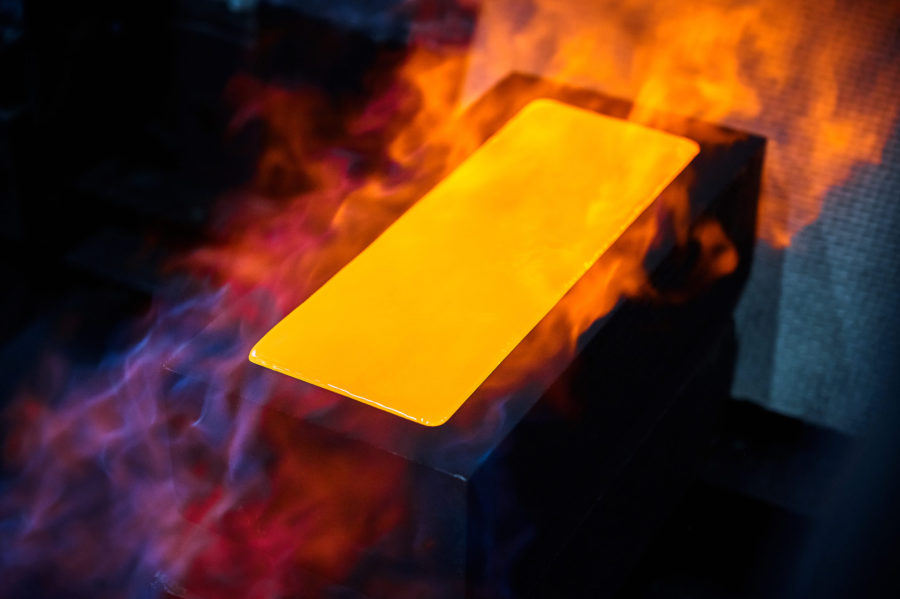The Golden State: A closer look at mining in California

The Golden State: A closer look at mining in California
California is known as the Golden State for its history of gold production in the 19th and 20th centuries, and the mining industry continues to build on its rich history to this day.
With roughly $4.7 billion worth of non-fuel minerals produced in 2020, the Golden State is one of the largest states for mining and the sole source of rare earth elements in the United States.
The above infographic from KORE Mining highlights how California earned its famous nickname, and how its mining industry continues to shine today, just like its gold.
How the golden state found its name
Back in the late 1770s, during the period of Spanish colonization in California, a group of Spaniards discovered gold in Imperial County, and small-scale mining began. However, it was not until 1848 that gold mining really kicked off.
In 1848, James Marshall—a carpenter and sawmill operator—went down to the American River in Coloma to inspect progress on a sawmill under construction, and saw something that defined the future of California’s economy.
“My eye was caught by something shining in the bottom of the ditch. . . . I reached my hand down and picked it up; it made my heart thump, for I was certain it was gold. . . Then I saw another.”
— James Marshall via Library of Congress.
As word spread, thousands of prospectors and gold-seekers made their way to California in search of their own shiny nuggets in an event now known as the Gold Rush. In fact, the influx of migrants was so large that they came to be known as the “forty-niners”, named after the year they started arriving. By 1855, miners had extracted over 12 million ounces of gold, and the Gold Rush neared its end.
Over a century later, in 1968, “the Golden State” became California’s official nickname for both its prolific gold discoveries and golden poppy fields. By this time, most historical gold mines had ceased operations, but for California’s mining industry, it was just the beginning.
Mining in California today
Although California is well-known for Hollywood and Silicon Valley, it remains one of the most important states for mining in the country.
As of 2018, there were 739 mines in California producing 23 different commodities, from gold and rare earths to boron and construction minerals. Due to the industry’s size and significance, mining plays an important role in the Golden State’s economy.
In 2020, California’s mining industry generated:
- $7.3 billion in labor income
- $13.6 billion in GDP
- 99,120 direct and indirect jobs
Mining companies in California benefit from access to clean energy, infrastructure, and well-established transport networks. Additionally, the Golden State is also known for its high reclamation standards, which ensure that mining sites are returned to their original undisturbed states, reducing the environmental impact of mines.
The future of gold in California: Imperial county
Imperial County has a place in history with California’s first known gold discovery in the 1770s. Its golden history continues today with KORE’s Imperial Project, one of the largest gold discoveries in California, and the Mesquite Mine—California’s largest gold mine—which has been producing gold since 1985.
With its rich history, active mining industry, and up-and-coming gold discoveries, California will always remain the Golden State, and Imperial County has the potential to carry forward its legacy.
More News
{{ commodity.name }}
{{ post.title }}
{{ post.date }}

3 Comments
Marley Green
Need faster action on permits…and honest company’s to up front. CEO s
Marley Green
Follow a path..but leave a TRAIL.
. Honor.Honesty.Respect.
LOVE MONTE GREEN.
Steve Walker
Well….. it looks as if the RISK in other jurisdictions has become a considerably more hazardous environment?
California is looking pretty good as far as opportunities that have been ignored by many in mining… that never got over the 80’s that were brutal to mining investors….is 35 years enough?
First in, get the best pick of old historic HIGH GRADE GOLD production mines !!
Kinross just lost 20% of production in a couple of weeks…450,000 ounces a year….POOF!
Cali seems a no-brained?